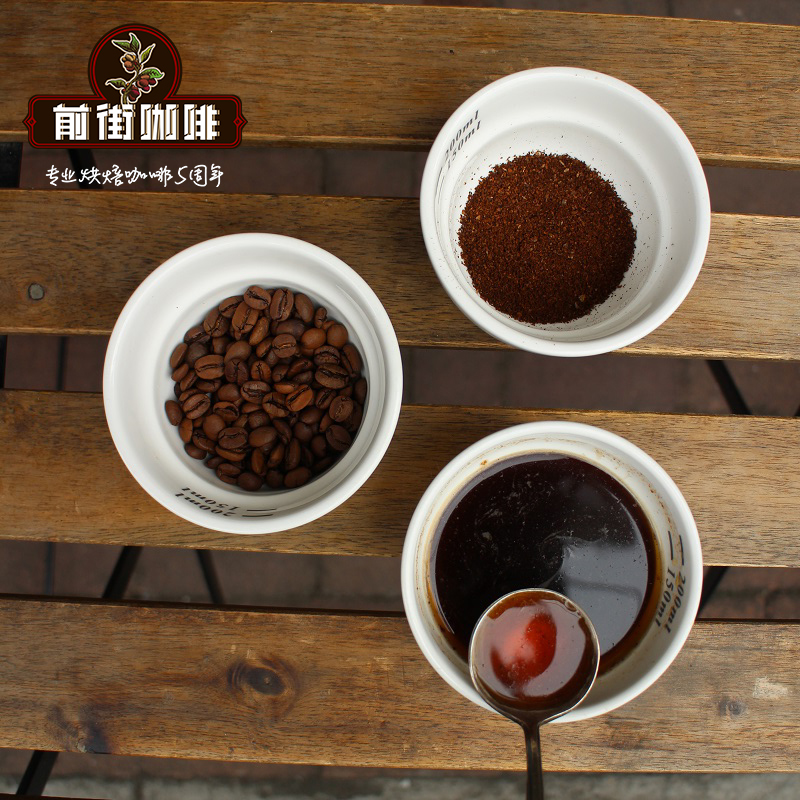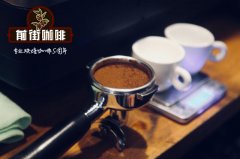Espresso knowledge | will the temperature of coffee powder lead to uneven extraction of espresso?

Are you worried about the water temperature change of 3 °C in the head of the espresso machine? Yes? Well, what if I told you that the temperature change of your ground coffee might be much greater?
The relationship between coffee powder temperature and espresso quality is often overlooked. But it exists-the industry begins to pay attention to it.
Is your coffee grinder heating ground coffee?
There are many different types of grinders available. However, whether conical or flat, ceramic or metal, special coffee grinders usually use burrs instead of blades.
This means that you will find two burrs in the grinder. The distance between them determines the grinding size. When the grinder is turned on, at least one of them will rotate to grind the beans into smaller pieces.
However, this process involves friction, which in turn generates heat. The heat is then spread to the rest of the grinder and to the coffee itself. Therefore, unless you use special equipment, the exact temperature of the grinding room will vary depending on how long the grinder has been running.
Of course, professional grinders usually have a cooling system, which consists of fans, heat exchangers and radiators. However, although these systems cool machines, they rarely cool machines accurately. Most of them also do not allow baristas to monitor the temperature of ground coffee.
Lauro Fioretti has tried to use several grinders from different manufacturers. He told me: "depending on the speed or speed of the coffee, or how busy or quiet you are, the grinding temperature of the coffee can vary from 20 °C side 68 °F to 80 °C hand 176 °F. Therefore, the swing is 60 °C amp 176 °F. "
Temperature changes like this can affect the extraction of coffee, leading to quality and consistency problems.
Effect of inconsistent temperature of Coffee Powder
"when the temperature in the grinding room rises, you will find that the shooting time is getting shorter and shorter," Lauro told me. As a result, your coffee is extracted faster, so you must adjust the grinder to make it finer and thinner to compensate for this effect. "
Then, when the rush hour is over and baristas need to reduce the use of grinders? The temperature began to drop. The barista must modify the grinding settings again. While this may not sound like a big deal, the more baristas need to adjust settings, errors, inconsistencies and poor extraction, the greater the risk.
More importantly, Lauro told me that as the grinder heats up, it begins to grind coffee faster. This has a knock-on effect. The temperature of the grinder affects the dose because most of the grinders actually available on the market are on-demand doses. Therefore, you can predict what you will get in portafilter according to the timer, but the performance of the grinder will vary according to temperature. "
I asked him why the temperature affected the extraction and grinding time of coffee, but he told me that they were still trying to solve the problem. "our original idea was to change the particle size, so we ground the same coffee at different temperatures and analyzed it with Master Sizer," he said.
In addition, Andr é Eirmann [Marketing Director of UCC in Switzerland and Communications Department of SCA in Switzerland] conducted the same test on another brand of bean grinder. The results show that the difference in fines is very small. [according to Andr é, this is not statistically significant], but I believe that nuances will make a big difference on the surface of the exposed particles (but this needs to be proved), and / or it may be that we are not using a suitable analyzer. "
However, whatever the reason, Laurie knows one thing: changes in temperature have an effect on coffee.
Why is it so difficult to keep the grinder cool?
It is not impossible to cool the chamber of the grinder, although it is much easier to prevent it from getting hot in the first place. Take Mythos II as an example: the grinding chamber is located on the outside and is made of aluminum to keep it as cold as possible.
But, as Colin said, "heating a room is much more expensive than heating a room; refrigerating things is very expensive and difficult, and consumes a lot of energy."
In other words, you can cool the grinding room, but at a price. But for cafe owners who want to be more efficient and energy efficient, this may not be an ideal choice.
And, in fact, how many cooling grinding rooms do we actually need? Colin told me that in 2010, "it is generally believed that hot ground coffee is of poor quality, while cold ground coffee is of good quality."
But now some people question this hypothesis.
Stabilize the temperature of coffee powder
"maybe the question is not whether the ground coffee is hot or cold, but in fact, the question is that it is changing," Colin said.
So the team tested the theory: they ground several different coffees at different temperatures and then analyzed the extraction. Result?
"I believe that these compounds have different solubility at different temperatures, which will affect the extraction effect," Lauro stressed. However, in this experiment, the quality difference is not obvious.
Moreover, no matter what the exact degree of the chamber is, as long as it is stable, the team can dial into the grinder to get the same extraction time and flavor characteristics for each espresso-no matter how fast they measure the shots.
In other words, their research shows that the biggest problem with the grinding chamber temperature is inconsistency, not the temperature itself.
The team still stressed the importance of cooling the chamber to avoid extreme temperatures. However, they also have warm-up capabilities when building Mythos II. This allows them to reduce the number of degrees required to cool the chamber, thereby saving energy without the risk of inconsistency.
Temperature for grinding coffee powder: this is not the variable we have discussed, but it affects quality and consistency. For busy coffee shops, this can cause special problems when the grinding room gets hot during peak hours.
But like most things in coffee, consistency is the key. As long as the beans are kept at the same temperature every time, it doesn't matter what temperature the beans are ground to.
Important Notice :
前街咖啡 FrontStreet Coffee has moved to new addredd:
FrontStreet Coffee Address: 315,Donghua East Road,GuangZhou
Tel:020 38364473
- Prev

Espresso | how to ensure a stable flow rate during the extraction of espresso is important
Have you ever tried to keep the extraction time of espresso consistent? Maybe you have checked the machine to make sure that the pressure and temperature are stable. Your powder is correct. And you have to tamp it carefully. However, no matter how much you follow these best practices, the extraction time will change. So what's the problem? Well, this may be your process consistency. The flow rate is concentrated.
- Next

Studies by the American Medical Association show that drinking coffee properly can effectively reduce the risk of high blood pressure
Coffee contains caffeine, and it was thought that drinking coffee would lead to high blood pressure. How is it actually? Most importantly, coffee is not the direct cause of high blood pressure. On the contrary, according to the American Medical Association, some studies have reported that it has a risk-reducing effect. Let's carefully study the relationship between coffee and high blood pressure. What is caffeine? First of all, the compound itself caffeine
Related
- Beginners will see the "Coffee pull flower" guide!
- What is the difference between ice blog purified milk and ordinary milk coffee?
- Why is the Philippines the largest producer of crops in Liberia?
- For coffee extraction, should the fine powder be retained?
- How does extracted espresso fill pressed powder? How much strength does it take to press the powder?
- How to make jasmine cold extract coffee? Is the jasmine + latte good?
- Will this little toy really make the coffee taste better? How does Lily Drip affect coffee extraction?
- Will the action of slapping the filter cup also affect coffee extraction?
- What's the difference between powder-to-water ratio and powder-to-liquid ratio?
- What is the Ethiopian local species? What does it have to do with Heirloom native species?

